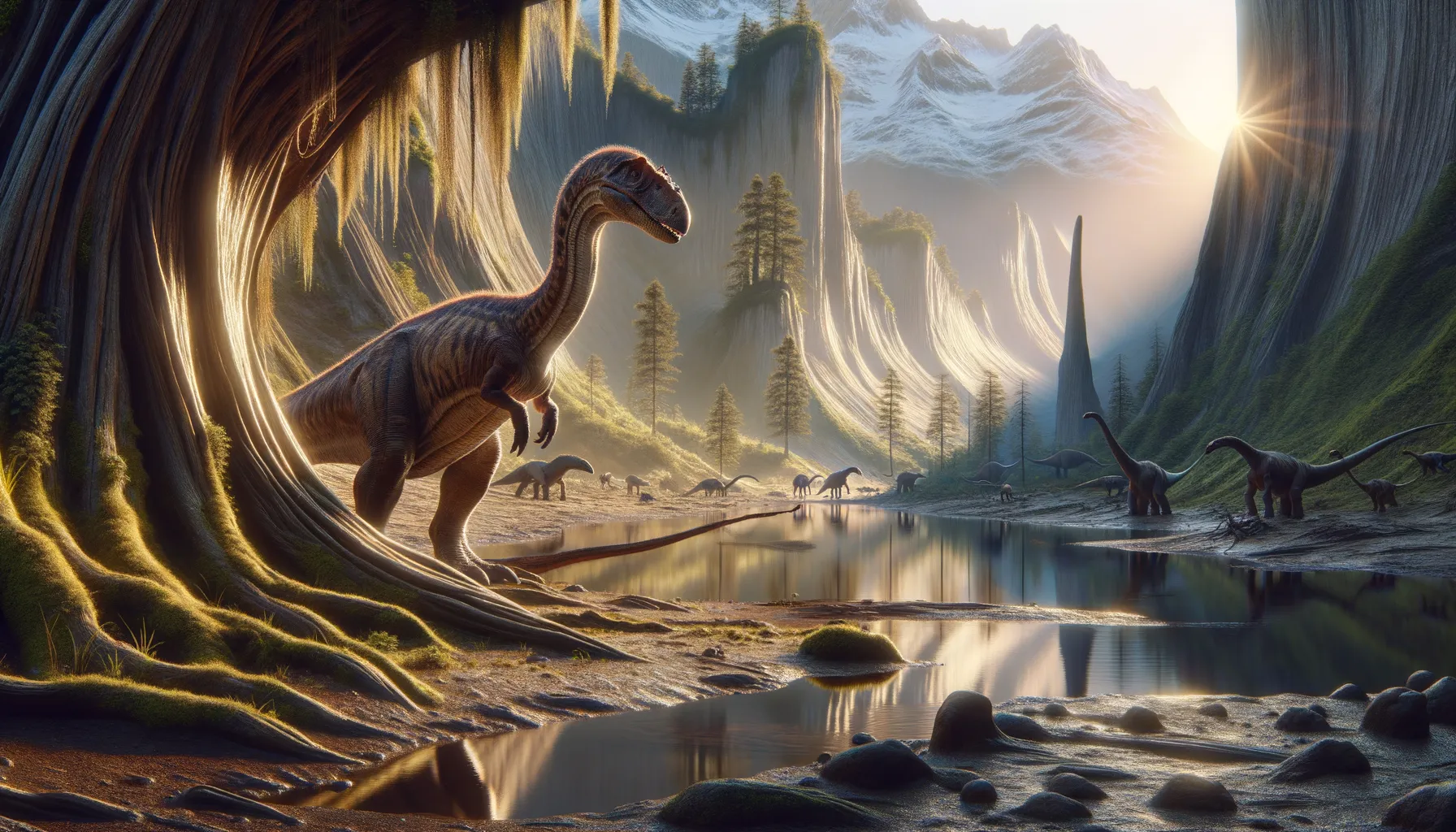
Chromogisaurus
A tiny trailblazer of dino evolution.
Period
Triassic
Length
Around 2 meters long.
Height
Approximately 1 meter tall at the hips.
Weight
Estimated to weigh between 40 to 90 kg.
Chromogisaurus was a small, bipedal dinosaur that roamed the Earth during the Late Triassic period. It was one of the early members of the sauropodomorph group, which includes later giants like Brachiosaurus. Chromogisaurus was discovered in Argentina, revealing crucial insights into the early evolution of dinosaurs. While not as large as many of its descendants, it played a significant role in the biodiversity of its time.
Diet
Chromogisaurus was herbivorous, feeding mainly on the primitive plants that were abundant during the Triassic period. Its diet might have included ferns and cycads.
Hunting
As a herbivore, Chromogisaurus did not hunt but instead foraged for plant material. It would have used its small size to navigate dense vegetation.
Environmental challenges
Chromogisaurus lived during a time of significant environmental changes, as the Earth transitioned from the Permian to the Triassic. Volcanic activity and climate shifts would have posed challenges. These conditions likely influenced its development and adaptation strategies, favoring species that could exploit new ecological niches. Survival required adaptability to frequently changing habitats and resources.
Speed
Believed to be relatively slow-moving.
Lifespan
Lifespan likely similar to other early saurischians.
First discovery
Discovered in Argentina in 2009.
Fun Facts
- Chromogisaurus lived during the Triassic period, about 230 million years ago.
- Its name means 'colored earth lizard', reflecting its vibrant fossil discovery location.
- Chromogisaurus was a small dinosaur, approximately 1.5 meters long.
- This dinosaur is believed to have been an early relative of bigger dinosaurs like Brontosaurus.
- Fossils of Chromogisaurus were discovered in Argentina, indicating it lived in what is now South America.
- It was likely a bipedal dinosaur, walking on two legs.
- Chromogisaurus is part of a group called sauropodomorphs, which eventually gave rise to giant long-necked dinosaurs.
Growth and Development
Chromogisaurus, like many early dinosaurs, likely experienced rapid growth to reach maturity quickly. This strategy would have been advantageous in a competitive world. As it grew, it would have shifted from a more flexible juvenile form to a robust adult structure capable of accessing different types of vegetation. This adaptability in growth patterns could have played a role in its evolutionary success.
Habitat
Chromogisaurus inhabited the lush ecosystems of Late Triassic Argentina, characterized by river valleys and thick vegetation. These environments provided ample plant life to sustain its herbivorous diet. The region was experiencing tectonic movements and changing climates, shaping diverse habitats. The ecological diversity offered various niches that Chromogisaurus and contemporaneous species could exploit.
Interaction with other species
Chromogisaurus likely shared its habitat with other early dinosaurs and reptiles, leading to both competitive and symbiotic interactions. Its presence would have contributed to the complex food webs, providing prey for predators and interacting with contemporary herbivores. The cohabitation with varied species highlighted the dynamic evolutionary pressures of the Triassic landscapes.
Natural lifespan
Its natural lifespan might have ranged around 20 to 30 years.
Reproduction
Chromogisaurus would have reproduced by laying eggs, similar to other dinosaurs. Nesting strategies might have included selecting protected sites to ensure the safety of the eggs from predators and environmental hazards. The reproductive strategies of Chromogisaurus were vital for maintaining population levels in a dynamic prehistoric environment. Parental care was minimal, with hatchlings being relatively independent early in life.
Social behaviour
Chromogisaurus might have exhibited some degree of social behavior, potentially forming small groups for foraging and protection. Group living would have provided advantages against predators, especially for younger or injured individuals. The extent of its social interactions remains speculative, as direct evidence is challenging to ascertain from the fossil record.
Fossil locations
The only known fossils of Chromogisaurus have been discovered in the Ischigualasto Formation in Argentina. This area has been rich in Triassic-era fossils, revealing various early dinosaur species. The fossil findings have helped paleontologists understand more about the diversification of early dinosaurs in South America. The presence of Chromogisaurus fossils in a single location underscores the region's significance in paleontological studies.
